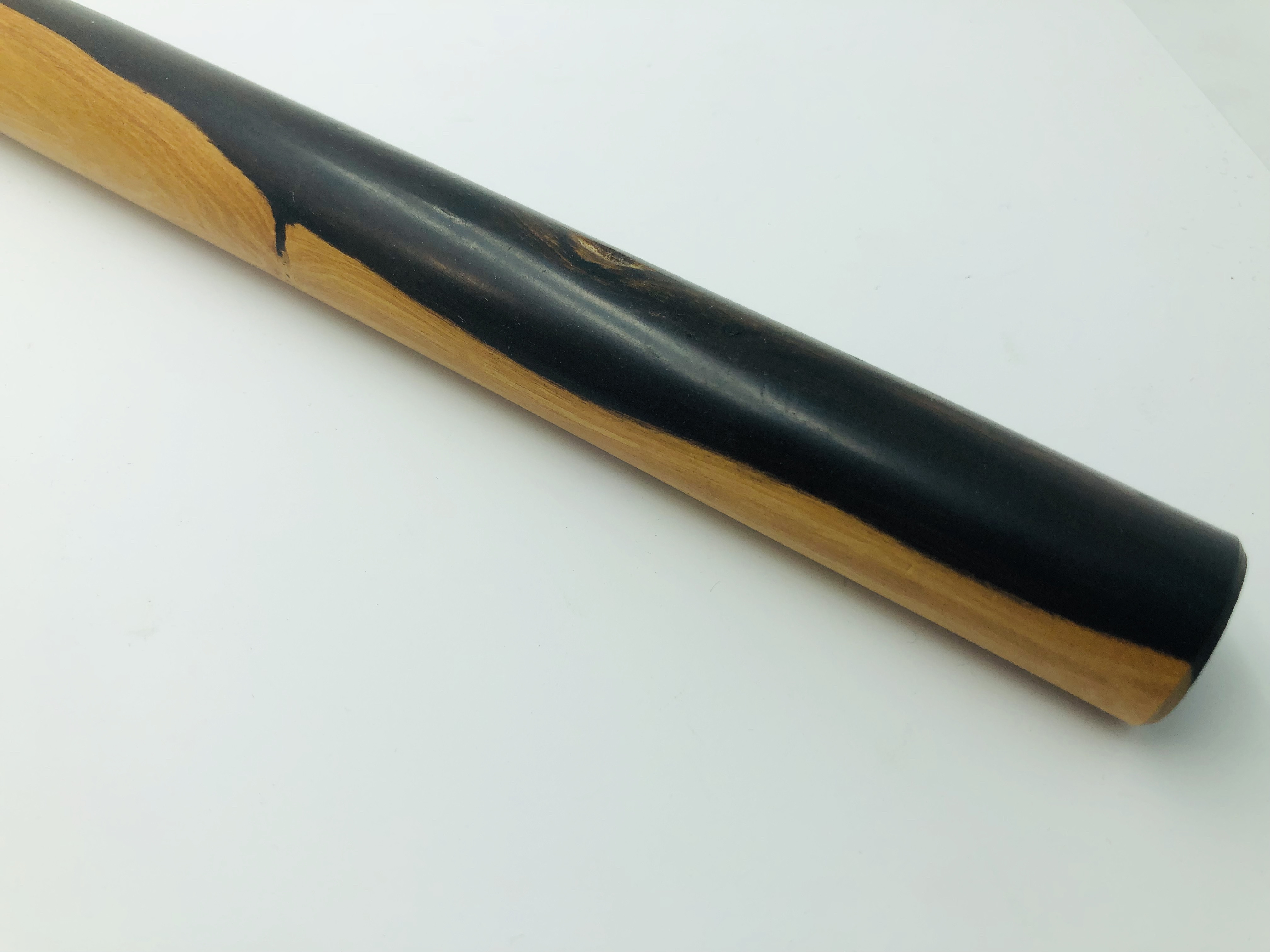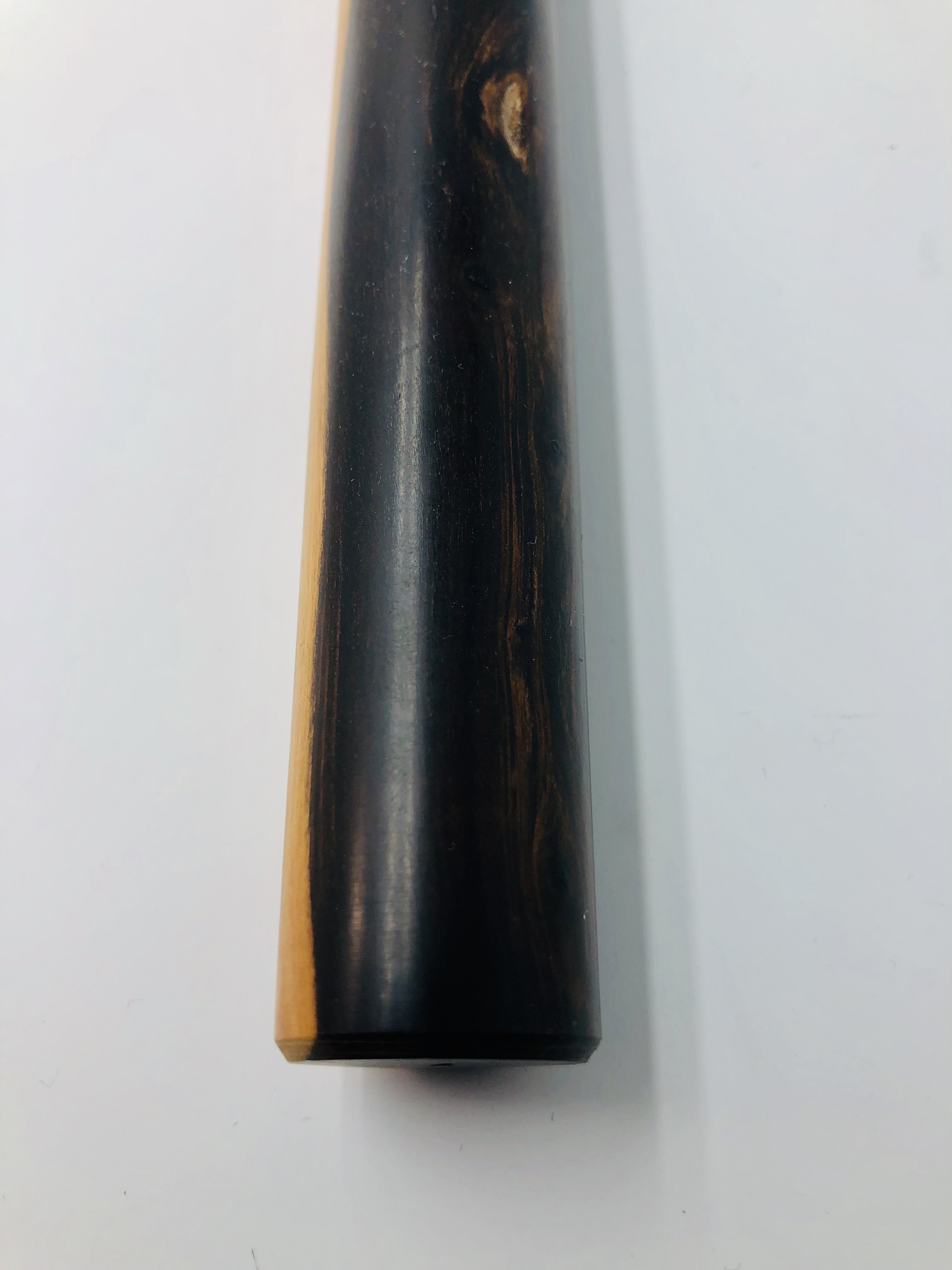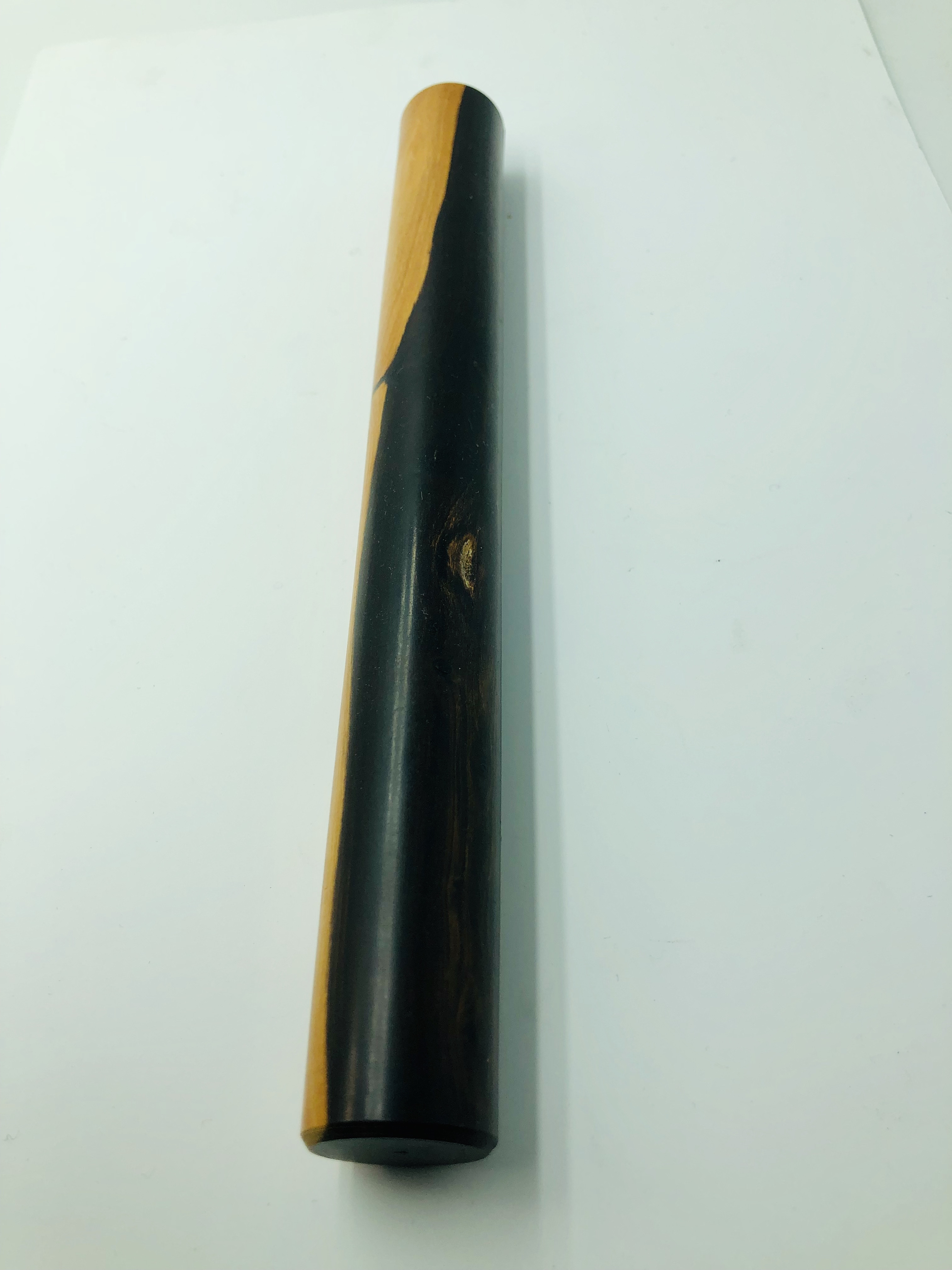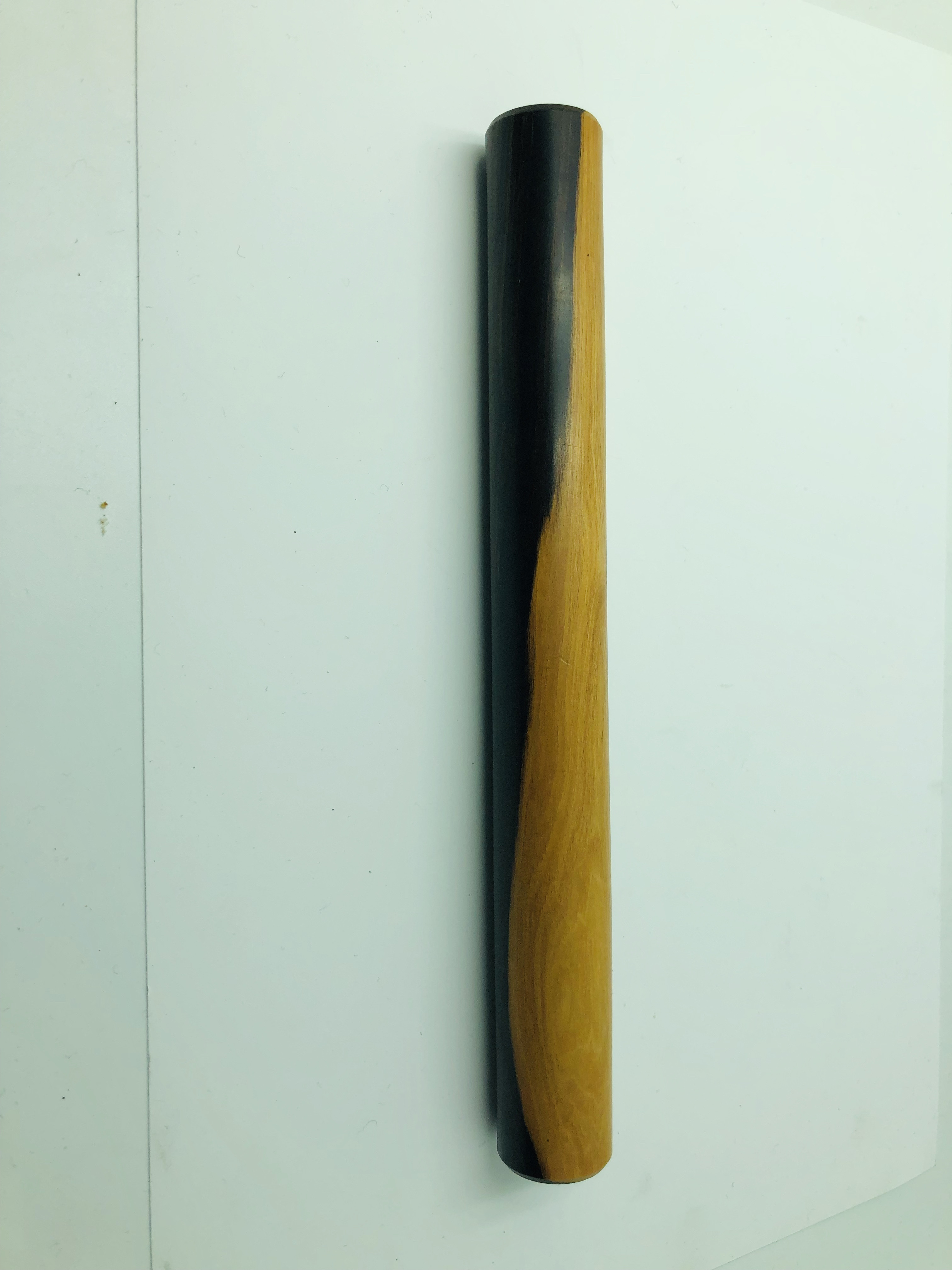Here are two examples of Indian Rosewood.
On the left is the good stuff, slow grown, old forest growth, and from quite high altitudes on the slopes of the Himalayas. This is the Indian Rosewood that our grandfathers knew, it's virtually unobtainable now and I'm down to my last few boards. In its place we usually get the board on the right, Sonokeling Rosewood. It's the identical species (Dalbergia Latifolia) but fast, plantation grown at lower altitudes in a warmer climate and in different soil. Net result is it rarely has the density or the deep purpley/black tones or oiliness or intoxicating fragrance of the original. But botanically they're identical.
And if you want to see how Rosewood can age then take a look at this Rosewood front handle on an American Stanley plane,
I'm no expert on older planes but i've read that Stanley used Indian Rosewood. Actually I'm not entirely convinced, from the samples I've seen (at least the cleaner samples) I've always thought it might be Cocobolo (also a Rosewood), and probably Mexican Cocobolo which when freshly sawn looks like this,
The finest grades of Cocobolo tend to come from further south in Central America, in particular Nicaragua. I've got a number of boards of Nicaraguan Cocobolo, sequentially sawn from the same log and in different thicknesses. Cocobolo is a big tree and these boards are huge.
I've never seen African Blackwood anywhere near this big, so one clue for Rosewood identification can simply be the size of the piece.
Here's a board of the almost mythical Rio Rosewood,
Large, virgin boards have been prohibited by CITES for many years, and even before that it was virtually unobtainable. You used to sometimes find a few boards for sale when an antique restorer was retiring, but the days of every small village having a polisher/restorer are long gone. Nowadays the Brazilian government allows the harvesting of the stumps from the Rio Rosewood trees felled thirty or more years ago, but these only yield small pieces which tend to go for astronomical prices to luthiers.



















































